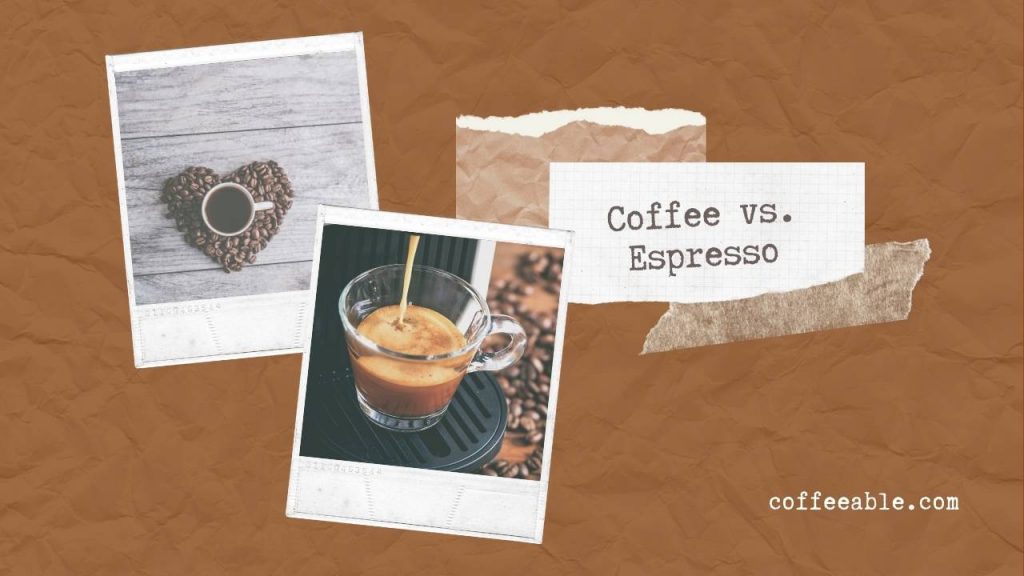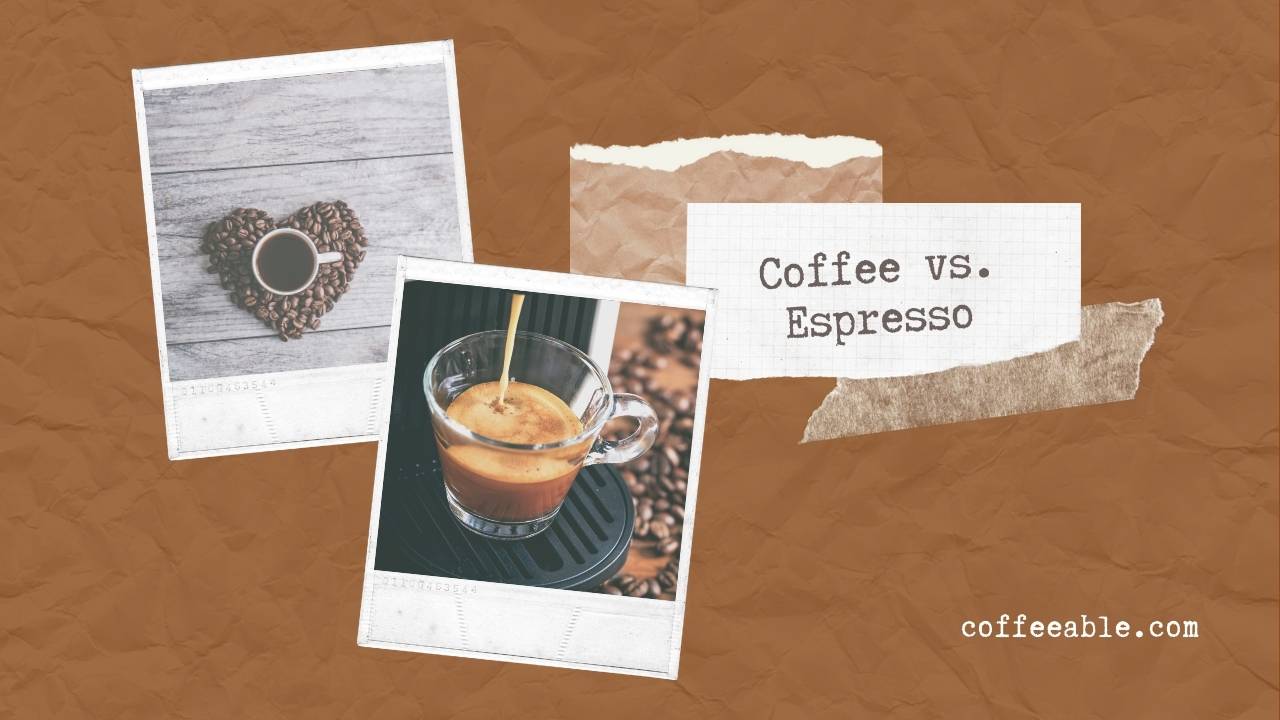Do you know what makes dripped coffee different from espresso? If you are not a coffee snob, you will say – they are all coffee, after all. Technically, you can make coffee and espresso from the same beans. So, what is the difference between coffee and espresso? All the differences start from the very beginning, which is the preparations of the beans.
Main difference between espresso and coffee
When you walk into any coffee shop, the two most common options are – Coffee and Espresso. Under the coffee section, you will generally find – hot or iced coffee or instant coffee. And for the Espresso section, you will find – cappuccino, lattes, mocha, and so on. But there goes a question in our mind – what is the difference between coffee and espresso?
Espresso is a coffee, but it is just one of the methods of brewing coffee. Espresso can be made from the same beans as coffee, but it is thicker, stronger, and higher in caffeine.
Generally, the coffee beans designated for espresso are roasted for a longer period than the beans for drip coffee. However, you can use the espresso-roasted beans for making drip coffee. But the thing you have to be careful with the size of grounds and the right gear. And the right gear denotes the espresso machine, which delivers a coffee shot with a top layer of foam known as crema. This is the by-product of the high-pressure extraction process. It enhances the concentrated flavor and syrupy body.
If we talk about drip-brewed coffee, you will also need to take some measures. You will need time and coarser grinds. And the coffee you will get in this method is kind of mild in flavor than a shot of espresso.
You May Also Like: Best Single Cup Coffee Maker with Grinder
Coffee vs espresso
| Features | Coffee | Espresso |
|---|---|---|
| How much caffeine in a cup | 8 oz [70-140 mg caffeine] | 1.5 oz [60-80mg caffeine] |
| Brewing Time | 8 to 24 hours | 30 seconds |
| Extraction | Uses gravity | Uses Pressure |
| Grind Type | Medium to large | Fine |
| Roast | Dark | As you prefer |
Caffeine level between espresso or coffee
If we want to determine the caffeine levels of coffee and espresso, it will be a tricky job.
The factors for different caffeine levels
- There is a misconception that darker coffee roasts have more caffeine because of their strong flavor. But the truth is for the prolonged heat of heavier roasting breaks down the caffeine molecule. So, the lighter roast or, the lighter color has more caffeine.
- If we talk about the grinds, the Espresso brewing method requires much finer grinds than the drip brewing method. The finer the grinds, the more caffeine the coffee gets.
- The brewing time also influences the level of caffeine. The longer you brew, the higher level of caffeine it will get. So, the lungos espresso will have a higher caffeine level than ristrettos.
- The amount of ground beans per cup of water also determines the caffeine level. Generally, for most common recipes, you will need 30 grams of coffee per 12 to 16-ounce water or 350 to 450 ml water.
Let me share with you a thing to clear out your doubts. Decaf is not caffeine-free. Generally, a 16-ounce decaf coffee from Starbucks contains about 12.5 mg of caffeine.
Other factors for the difference between coffee vs espresso

The roasting
Generally, espresso beans are roasted until they turn into really dark. The dark roasted beans have the capacity to withstand the high pressure of the machine. And you can also bring out the full body with low acidity.
Time
Other brewing method takes time as they rely on the slow filtering of hot water through the grinds. Whereas the espresso machine pressurizes and shoots near-boiling water through fine grinds. And thus, you get your shot in under thirty seconds.
Beans
There are mainly two kinds of beans grown commercially – Robusta and Arabica. Robusta has a nutty flavor when roasted and peanut-y flavor when unroasted. And the Arabica has a variety of tastes – from sweet to tangy.
Acidity
Espresso has less amount of acidity. That’s why it is a healthy choice for many whose stomach is more sensitive to acidity.
Brewing temperature
For the espresso, the optimum water temperature should be between 190 and 196 degrees F. And for the coffee, the optimum water temperature should be between 195°F and 205° F.
You May Also Like: Best Espresso Machine Under 200 in 2020: The Ultimate Guide
Some interesting facts about espresso
Espresso based shots
There are lots of beverages based on espresso –
- Cappuccino
- Americano
- Affogato
- Breve
- Mocha
- Latte
Espresso types
- Doppio
- Ristretto
- Macchiato.
- Lungo
- Corretto
- Romano
Caffeine in coffee and espresso by brand
We are giving a list of the general ratio of caffeine per coffee brands. Remember, the amount can vary.
Caribou coffee
- Brewed coffee(Medium): 305 mg
- Espresso(Medium) : 270 mg ( Caribou coffee serves larger espressos than other coffeehouses.
Costa coffee
- Espresso: 92 mg(single shot), 185 mg (double shot), 277 mg(triple shot).
Caffeine in Expresso
We are giving some estimated levels of caffeine in various espresso drinks according to the regular preparation method
- Decaf Espresso – 8 mg(single shot), 16 mg (Double Shot)
- Espresso – around 26 to 100 mg ( single shot),
FAQs
Now you know!
So now you get – all espresso is coffee, but not all coffee is espresso. The difference between coffee and espresso depends on so many things! Let us know which flavor of coffee is your favorite.

